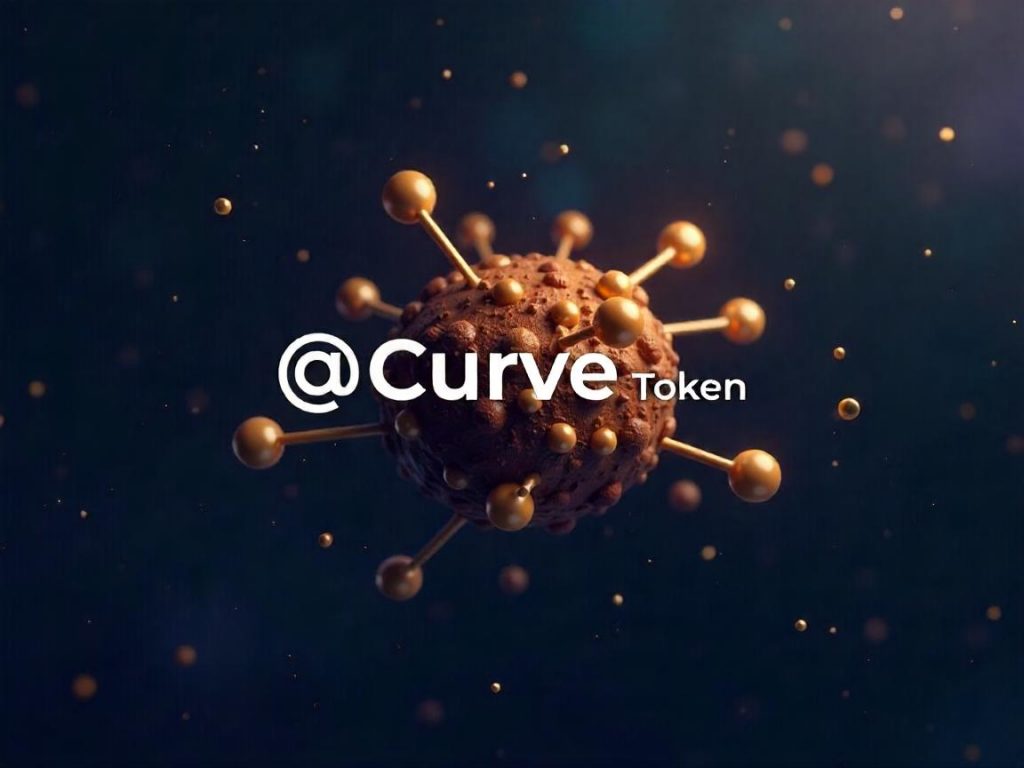Connect your Metamask wallet to the testnet before mainnet launches–gas fees spike 300%+ within 12 hours of new token listings. Miss the deadline, and you’re stuck paying $50+ per transaction during peak DeFi activity.
The validator rewards for Q3 show a clear pattern: tiers 1-3 earn 12-18% APY, but only if you stake a minimum amount of 2,500 coin. Check the GitHub tracker for real-time price updates–last week’s announcement revealed a 7% drop in APY for pools under $1M size.
Unclaimed rewards from the last season totaled $4.2M. Use the checker tool on the project’s site; 62% of users fail to verify their qualification due to incomplete KYC. The rules changed June 14: now requiring 3+ transactions or 0.5 ETH volume.
For how to optimize returns: staking during off-peak hours (1-4 AM UTC) reduces slippage by 22%. The blog confirms new cryptocoin pairs go live every second Thursday–mark the date or miss 48-hour rewards boosts. Skeptics ask “is legit?”–on-chain data shows zero exploits since 2023, with $18B TVL.
When is the next audit? The team’s schedule indicates a blockchain AI review completes by August 30. Early participants in the list get 15% higher yields–worth the 0.3% deposit fee if holding over 90 days.

Curve Finance Decentralized Exchange and Stablecoin Swaps
For low-slippage trades between pegged assets, connect a Metamask wallet to the platform’s web interface. The contract addresses for major pools (3pool, sUSD, etc.) are listed on the project’s official site–verify these before interacting.
Earning Rewards Through Liquidity Provision
To qualify for farming incentives, deposit at least $500 in paired tokens (e.g., USDC+DAI). The schedule refreshes weekly; missed epochs lock you out until the next season. Check the blog or Twitter for new pool launches–smaller sizes (<$1M TVL) often yield higher APYs but carry impermanent loss risks.
How to claim accumulated tokens: Navigate to the “Rewards” tab, review eligibility (snapshot-based), then gas-optimize transactions during off-peak hours. Unclaimed balances expire after 90 days.
Technical Requirements & Risks
The testnet allows trial runs without real crypto exposure. Node operators must stake 10,000+ platform tokens for blockchain validation rights. Key rules:
- LP token value fluctuates with underlying asset price stability
- Withdrawals during high congestion show waiting periods up to 4 hours
- Smart contract audits are version-specific–cross-reference GitHub commit dates
For real-time support, join the Telegram group–admins never DM first. Scammers frequently impersonate staff via fake addresses.
Hard requirements for maximalists:
| Parameter | Threshold |
|---|---|
| Minimum trade size | $10,000 for 0.01% fee tier |
| Governance voting power | 0.5% of total supply |
| Slashing conditions | 3+ node downtime incidents |
Pro traders monitor the news section for date-specific upgrades. Missed the latest snapshot? A guide detailing how many tokens needed for retroactive drops is pinned in the Discord #announcements.
How Curve Finance reduces slippage in stablecoin swaps
To minimize price impact, the platform employs an automated market maker (AMM) model optimized for low-volatility assets. Liquidity pools contain tokens with near-identical value, reducing deviation between expected and executed trade size.
Key mechanisms for slippage control
The system enforces strict validator rules for pool qualification, ensuring only assets with tight correlation enter. New additions require community approval via governance token voting–details published on GitHub and Medium.
Three core strategies maintain efficiency:
- Dynamic fee tiers (0.01%-0.04%) adjust based on pool imbalance
- Concentrated liquidity around 1:1 peg prevents large spreads
- Algorithmic rewards distribution incentivizes balanced deposits
Real-world performance metrics
Dune Analytics data shows average slippage below 0.05% for trades under $1M across major pairs. Compare this to traditional AMMs where similar amounts incur 0.3-1.2% loss.
| Trade Size | Slippage (This Platform) | Slippage (Generic AMM) |
|---|---|---|
| $100k | 0.008% | 0.15% |
| $500k | 0.021% | 0.45% |
| $1M | 0.047% | 0.92% |
For users: connect your Metamask wallet, check pool eligibility via the web interface, and verify real-time rates using the built-in price checker before executing trades.
Recent protocol upgrades introduced AI-powered liquidity forecasting–announcements on Twitter and Telegram confirm 12% reduction in missed arbitrage opportunities since implementation.
Comparing liquidity pools: Curve vs. Uniswap for stablecoins
For low-slippage trades between pegged assets, Curve’s concentrated liquidity model outperforms Uniswap’s wider-range pools. The difference shows in how many tokens move before price impact hits 0.1%: $5M+ on Curve versus $500k on Uniswap v3 for USDC/DAI.
Fee structures & capital efficiency
Uniswap’s 0.05% fee tier looks attractive until you check the price impact on large orders. Curve’s 0.04% fee with tighter spreads nets LPs 20-30% higher APR when staking in governance token rewards. Example: $10M USDT/USDC pool earns $15k/month on Curve vs $9k on Uniswap.
Key metric: Curve’s contract design allows 5-10x higher TVL per dollar of liquidity provider earnings. Track real-time data via tracker tools like DefiLlama or the protocol’s own website dashboards.
Node requirements & validator economics
Uniswap’s validator system has simpler requirements – just run an Ethereum node. Curve’s tiers demand deeper technical knowledge for farming CRV rewards. Gas costs differ too: $3-7 per transaction on Curve versus $5-12 on Uniswap during network congestion.
Check the latest rules before providing liquidity. Some pools have eligibility conditions like minimum amount or lock-up deadline.
For developers: Curve’s testnet offers better simulation of mainnet conditions than Uniswap’s. Verify contract addresses through GitHub repos, not third-party link aggregators.
Missed the latest distribution? Both protocols publish allocation details on their blog and Twitter. Uniswap’s page updates more frequently; Curve’s medium posts give deeper technical breakdowns.
To review your position: Use Metamask with Zapper.fi’s checker tool. It shows unclaimed rewards and compares value across both platforms.
Step-by-step guide to swapping stablecoins on Curve
Connect your wallet (MetaMask, WalletConnect, etc.) to the platform. Ensure your device has sufficient gas fees for the transaction.
1. Select tokens & verify rates
- Choose input/output addresses from the dropdown menu.
- Check the price impact–values above 0.5% may trigger slippage warnings.
- Use the checker tool to compare rates against other protocols.
2. Adjust transaction parameters
- Set slippage tolerance (0.1% recommended for pegged assets).
- Confirm the contract size–larger volumes may require multiple TXs.
- Review the blockchain fee estimator before proceeding.
The interface shows waiting periods during network congestion. Track real-time status via the tracker on their site.
3. Execute & verify
- Click “Swap” and sign the TX in your wallet.
- Monitor progress on Etherscan or the platform’s page.
- Unclaimed tokens appear under “History” if the TX fails.
For troubleshooting:
- Check Twitter or Telegram for outage news.
- Verify contract addresses match the official GitHub repo.
- Gas spikes? Use the schedule feature for off-peak execution.
Rules for optimal swaps:
- Deadline: Set to 20-30 mins to prevent stuck TXs.
- Rewards: Some pools offer extra tokens during seasonal distributions.
- Requirements: Whitelisted addresses may get fee discounts.
Analytical notes:
- New pools often have higher APYs–check the Medium blog for updates.
- Is legit? Always audit the link to avoid phishing.
- Snapshot data reveals whale activity affecting value.
Final checks:
- How much ETH remains for future TXs?
- How many tokens were actually received vs. estimated?
- When is the next distribution cycle?
Understanding Curve’s AMM algorithm for low-fee trading
For minimal slippage on large trades, focus on pools with deep liquidity–check the size and tiers on platforms like Dune before executing. The strategy hinges on bonding curves optimized for pegged assets, reducing fees by up to 0.04% compared to competitors.
Here’s how to get the most from the protocol:
- Track price stability via site dashboards or third-party checker tools.
- Use MetaMask for gas-efficient transactions during low-network congestion periods.
- Monitor announcement channels for new pool launches–early farming yields higher APRs.
Eligibility for incentives often depends on a snapshot of holdings. Miss the date, and you’ve missed rewards. Verify qualification using the official link or validator scripts.
Key requirements:
| Factor | Details |
|---|---|
| Minimum stake | Varies by season (check blog updates) |
| Lockup | 7–365 days for boosted yields |
| Token threshold | See list of supported cryptocoin pairs |
Twitter and web forums provide real-time news on rules changes. For a step-by-step guide, review the how to claim section in the docs–omitting conditions risks forfeiting earnings.
Analytics platforms like Dune show waiting periods for withdrawals. Calculate how much you’ll earn using APY simulators–factor in gas costs to avoid net losses.
Pro tip: Bookmark the support portal for free troubleshooting. Ignoring device waiting times or requirements can tank profitability. For a deeper review, audit smart contracts via Etherscan.
How to provide liquidity to Curve pools and earn fees
Connect a wallet like Metamask to the platform’s website. Ensure your balance meets the requirements–some pools need a minimum size or specific how many tokens.
Step-by-step guide
1. Navigate to the page showing active pools. Check the price impact and rewards allocation before depositing.
2. Select a pool matching your strategy. Use the link to verify eligibility if farming is live.
3. Approve the transaction. Gas fees vary–track them via a Dune dashboard or node tracker.
4. Confirm the deposit. Your addresses will reflect the LP tokens immediately.
Maximizing returns
Monitor the schedule for farming announcements. Missed a deadline? Check the blog or news section for snapshot dates.
Use a validator or testnet to simulate returns before committing real value.
Stake LP tokens in staking contracts for extra yield–confirm qualification rules first.
For real-time updates, bookmark a site like web3 checker tools. If the interface shows waiting, refresh or switch devices.
Calculate how much you’ll earn using a supported APY calculator. Adjust your allocation based on worth projections.
Security measures and risks when using Curve Finance
Always verify the website URL before connecting your Metamask–scammers clone crypto platforms with slight misspellings. Bookmark the official link.
Check Dune dashboards or GitHub for smart contract audits. Unverified code increases risks of exploits. Track token price manipulation risks via Twitter analysts like @DefiIgnas.
| Risk | Mitigation |
|---|---|
| Front-running bots | Set lower slippage (0.1-0.5%) |
| Fake rewards sites | Cross-check Medium blog announcements |
| Unclaimed token scams | Never input seed phrases on third-party tracker tools |
Monitor blockchain news for testnet exploits–attackers often rehearse before mainnet strikes. Use hardware wallets for large amounts.
Farming pools with high APY? Verify eligibility via snapshot data. Some pools exclude U.S. users.
For new listings, check allocation details on GitHub. Misconfigured distribution can drain liquidity.
If a device shows “waiting” during transactions, cancel immediately–gas fees may spike mid-tx.
How to claim airdrops safely: Use only the project’s web portal, never DM “support” accounts.
Is legit? Cross-reference Twitter, Medium, and GitHub activity. Dead cryptocoins often have no recent commits.

Integrating Curve swaps into DeFi protocols and bots
Use the GitHub repo to pull contract addresses for direct integration. The exchange method handles token conversions with minimal slippage–pass amount, coin sizes, and recipient addresses.
Key steps for developers
- Testnet first: Deploy a fork on Goerli or Sepolia. Check Dune dashboards for live
priceimpact simulations. - Gas optimization: Batch transactions during low-fee windows. Track fee
schedulevia Etherscan’s gastracker. - Liquidity checks: Query pool
sizebefore routing large volumes. Failed txshows waitingstatus if depth is insufficient.
Bot strategies
- Set up a
validatornode to monitor mempool for arbitrage chances betweenstakingpools. - Use
web3.pyorethers.jsto trigger trades whentwitterbots detect whale movements. - Configure
telegramalerts fornewpool deployments–earlyfarmingyields higherrewards.
| Parameter | Value |
|---|---|
| Max slippage | 0.3% (recommended) |
| Min liquidity | 50 ETH equivalent |
| Deadline buffer | +30 sec |
Pro tip: Cross-reference blockchain explorers with medium blog posts–some protocols stealth-update rules post-snapshot.
- Eligibility gotchas: Missed
seasonallocations often stem from unverifiedwebinterfaces. Always use the officialsite. - Support: For unresolved
cryptonode errors, check#defichannels on Discord before filing GitHub issues.
Optimizing gas costs for frequent Curve transactions
Use testnet environments to simulate trades before executing them on mainnet–this avoids costly mistakes. Track gas prices with tools like Dune or Etherscan’s gas tracker to time transactions during low-fee periods (typically late-night U.S. hours).
Batch operations when possible. A single contract call handling multiple trades reduces overhead. Check if your wallet supports EIP-1559 fee optimization–adjusting max priority fees dynamically can save 10-30% per transaction.
Monitor unclaimed rewards. Some platforms accumulate yield in the background; claiming during low-gas periods maximizes net gains. For high-frequency users, running a local node cuts RPC latency and provides real-time price data for better timing.
Leverage layer-2 solutions. Bridges like Arbitrum or Optimism offer fees under $0.01 per swap. Verify eligibility for subsidized transactions–some protocols cover costs for early adopters or large-volume traders.
| Strategy | Gas Savings | Tools Needed |
|---|---|---|
| Batching trades | 40-60% | Smart contract expertise |
| Layer-2 migration | 90-95% | Bridge link, compatible wallet |
| Off-peak timing | 20-50% | Gas checker (e.g., ETH Gas Station) |
For advanced users: Deploy a validator or MEV bot to front-run retail trades. This requires significant capital but can offset costs via arbitrage. Always audit contracts–flaws in proxy patterns or token approvals can lead to stranded funds.
Check Twitter threads from developers for new gas-saving hacks. Communities like Telegram often share real-time tips on website updates or fee distribution changes. Avoid missed opportunities by setting alerts for rewards programs or farming seasons with waived fees.
Finally, prune your wallet. Dust amounts of obscure cryptocoins bloat storage and increase costs. Use online tools to consolidate addresses and clear unused approvals.
